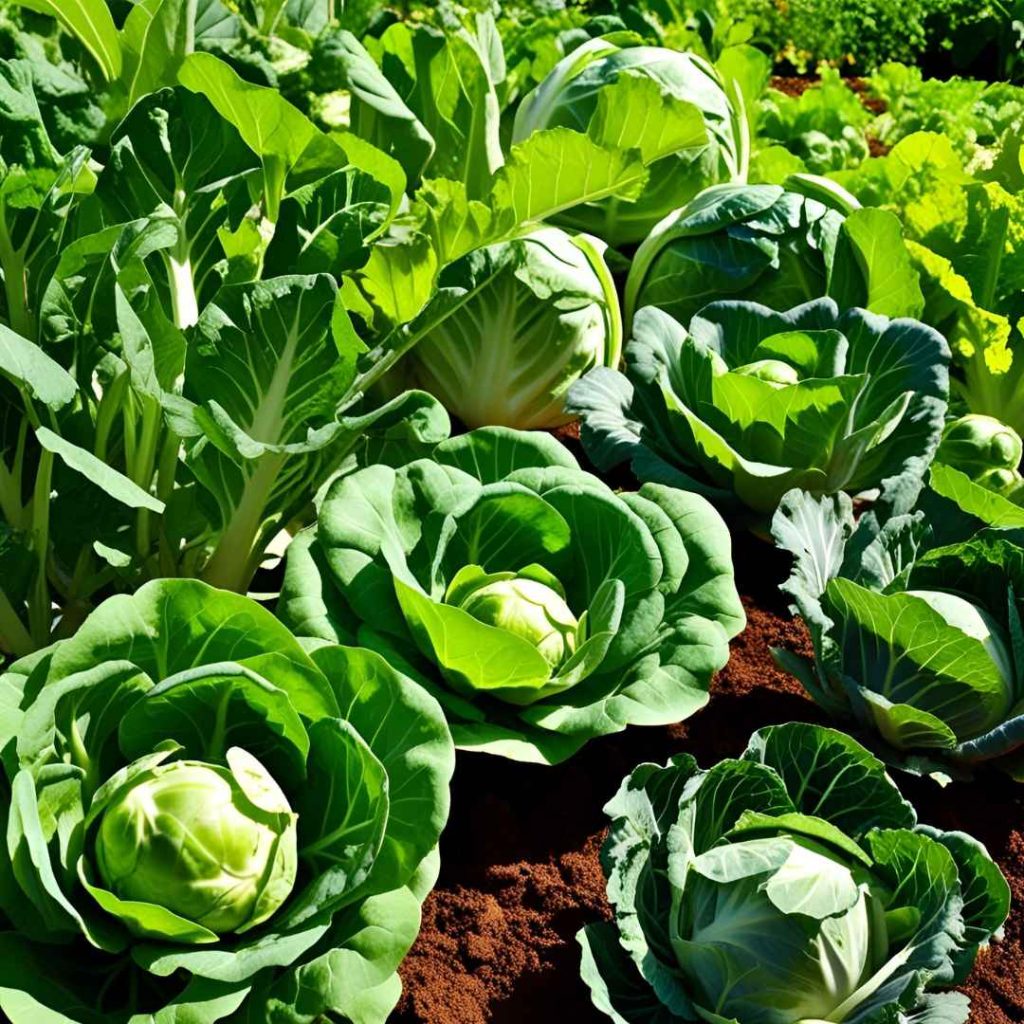The goal of zero waste gardening is to use everything in your landscaping to maximize outcomes while minimizing resources. This entails using the renewable resources in your vegetative area by doing things like collecting rainfall, utilizing all plant parts, and capturing daylight.
To ensure that nothing goes unused and that everything is used, it also entails producing your own manure rather than purchasing it, composting culinary trash, and cultivating soil that is nutritious.
By preventing invasive plants from growing and retaining humidity in the soil, manufacturing your own compost can reduce the quantities of water required for irrigation purposes and eliminate the requirement for herbicides.
Ways And Steps For A Thriving Organic Garden:
When you stroll in the yard and devour a sun-warmed tomato straight off the branch, is there anything more delicious than that? You wonder exactly which of the main benefits of organic farming is? and what your meals don’t include.
Additionally, cultivating organic blossoms, veggies, and herbal products turns your outdoor space into a fantastic habitat for honeybees, butterflies, and hummingbirds. It’s not as hard as you may believe to establish a sustainable landscape.
Choose Your Location:

Pick a spot that gets six to eight hours of daylight every day. For optimal production, the majority of producing crops, including bell peppers, tomatoes, squash, and melon varieties require uninterrupted sunlight.
But if your outdoor space is a little shaded, don’t give up. Several herbal products and green leafy vegetables, such as cabbage and lettuce leaves, can withstand up to three hours of partially sunny each day.
Avoid massive plants and their foundations, which might deprive your veggies of nourishment and water. Additionally, verify that a water supply is easily accessible.
Soil Conditions:
Make Use of Excellent Soil Having high-quality, nutrient-rich soil is essential for an organic landscaping to succeed. Robust root networks are encouraged in vegetation grown in soil that is well-draining and rich.
Starting a heap of compost now will assist nourish the ground if this is your initial experience with gardening in an organic manner, but keep in mind that it requires time for composting to decompose and be usable in your outdoor space.
Utilize potting mixture made particularly for receptacles for container gardening. Both nourishment and water may readily access the foundation of the plant because it is less dense and absorbs better than soil for landscaping.
Select The Ideal Plants:
A wholesome, minimally maintained organic landscape can be achieved by choosing species that are local to your area or that have been developed particularly for your environment. This is particularly crucial if you’re unaccustomed to organic landscaping.
Every Bonnie Organics variety that you can purchase at your neighborhood remodeling retailer or gardening center has been selected because it thrives in your region.
Use Water Sensibly:

Before irrigating, carefully examine the substrate because excessive watering can be as harmful to the crops as too little. Put your pointer finger into the ground an inch deep.
Leaving the substrate alone if it seems damp; if it seems dehydrated, replenish it. Make careful to hydrate the substrate around the plants’ bases so that humidity is absorbed by the root system.
Hydrating the foliage is not only inefficient, but it may also promote a climate that is conducive to illness. Organic landscapes benefit from drip watering, an exceptionally focused irrigation technique.
Give Your Vegetation Food:
Additional minerals are necessary for vegetation, especially large, voracious species like tomatoes and peppers, to yield abundant harvests. To ensure you add the correct quantity of vegetative food, verify that you understand the bundle’s instructions.
Keep Up With Mulching:

In addition to preventing weevils from getting the sunlight they require to thrive, an extensive covering of naturally occurring mulch assists in maintaining the topsoil wet, which may reduce the amount of liquid you require for growth.
Compost also gives an outdoor space a neat, attractive appearance. Raw trimmings of grass, crushed foliage, and even old timber chips make excellent mulching alternatives, while conifer and wheat straws are the most common.
Over time, mulch decomposes and enriches the ground with vitamins and minerals, which the vegetation will appreciate!
Change Up Your Crops:
Using a tried-and-true technique known as “crop rotation,” which essentially entails shifting plant z varieties to various areas each year, represents one of the greatest methods to safeguard your organic gardening.
You may steer clear of illnesses and bugs that might be hiding in the ground by varying your landscaping layout and relocating vegetation to other beds or sections of the yard.
Clear The Contaminants:
Maintaining adequate sanitation is crucial for both the landscaping and the worker. Check the stems and foliage for infestations periodically, eliminate damaged foliage and crops (do not put them in the composting heap), and get rid of yard debris (consider excessively ripe fruit, damaged twigs, falling foliage).
If you have used your equipment on potentially infected plants, take steps to disinfect them frequently by cleaning them with sterilizing rags.
What To Plant In Organic Gardens?
Tomatoes:

Keen to consume a lot of food, tomato crops flourish when their growing points are pushed far into sandy soil. They are wonderful complements of raising beds for gardening and thrive in full light. Plant tomatoes near the back of an elevated garden area because they tend to get fairly high. For assistance, include tomato trusses.
Legumes:
In the elevated planting bed, legumes serve a dual purpose by fixing nitrogen and returning it to the ground as they develop. They yield abundant crops and increase the dirt’s nutritional value.
They are frequently discovered in ascending and unsupported types, each of which are capable of being grown in elevated beds. Different Types of Chickpeas, Bush, and Pole Beans Peas Lentils.
Swiss Chard And Kale:
In raised-bed cultivation, these two late-season vegetables are excellent. In addition to thriving in colder climates and preventing consolidation of soil, they may be protected with chilly greenhouses or dome buildings to prolong the developing period and potentially provide you an excellent wintertime and autumn yield.
Lettuce, Spinach, And Mixed Greens:
The soothing conditions of the substrate and drainage-friendly soil of elevated gardens are ideal for the growth of lettuce vegetation, spinach, and diverse salad leaves.
As a gardening enthusiast, you will appreciate that, with the right safeguards in location, you can establish them sooner and consecutively throughout the growth period, extending it all nicely into December.
Brassicas:

In an elevated bed setting, brassica s are excellent first-round earlier vegetables. They prefer the controlled conditions in the soil that planted beds offer because they frequently snap in the hottest conditions.
For either initial and late-season agricultural products, the substrate is maintained more pleasant, possibly prolonging the period of growth. Additionally, they are simply sheltered by elevated beds, which makes harvesting them in the autumn and wintertime simple. Kale Brussels sprouts, broccoli, cauliflower and cabbage.
Eggplant And Peppers:
For sufficient justification, eggplant and spicy peppers are frequently the first things that spring up in our heads when considering what should be planted on an elevated gardening bed.
They are powerful nutritional eaters and flourish in the warming loam of planted beds. Landscapers can more easily meet the nutritional and irrigation needs of these abundant growers by using elevated beds.
Carrots:
Carrots are excellent crops to cultivate on elevated beds. Carrots may thrive without being hampered by rough terrain because of the unsecured, drainage-friendly soil that raised gardening space supply.
They can be readily folded in under the cover of higher vegetation since they bear berries beneath the ground and have a short tendency.
Beets And Radishes:

These two beautiful root veggies flourish best in the sandy substrate of planted beds because they aren’t competing with invasive plants or being hampered by gravelly ground. They are excellent commodities for recurrent planting because of their short ripening periods.
Cucumbers:
In raised gardening beds, cucumbers will thrive. To give these productive developing bushes as much area as possible, let them fall throughout the edges of planted beds or onto pergolas.
Celery:
Celery begs to establish itself in an elevated bed. It may prove a picky species that needs a long period of development, low conditions, lots of humidity, and material that is filled with nutrients. Bugs and rooted parasites can also be repelled by elevated plantings.
Potatoes:

An elevated gardening plot is ideal for potatoes. Planting in soil that drains properly keeps rotting at bay, and the unconsolidated mud lets bulbs develop completely without being hampered by boulders and heavy clay.
Melons:
Raised gardening spaces are ideal for giant ripening species like melons. The best growth conditions for luscious melons of all kinds are sunny, pH-corrected topsoil that is nutrient-rich and has sufficient drainage.
To make the most of the environment, these growing species can be encouraged to scale pergolas or various ascending frameworks, or they can be permitted to flow beyond the edges of planted beds.
Zucchini And Squash:
The elevated beds are a great way to grow enormous veggies like zucchini and squash. Hedge types are ideal complements to elevated beds and have a spreading attitude. Additionally, you can add pergolas for fast-growing, climbing vegetation to perch on or let them spill across the elevated bed’s boundaries.
